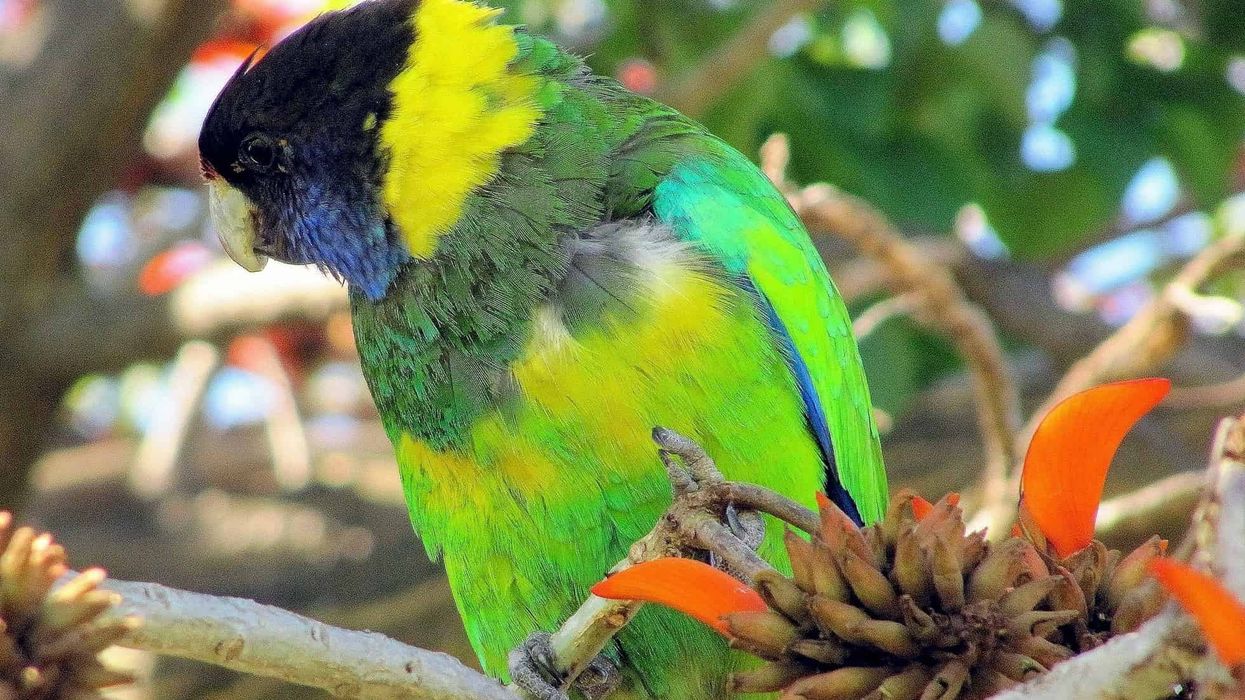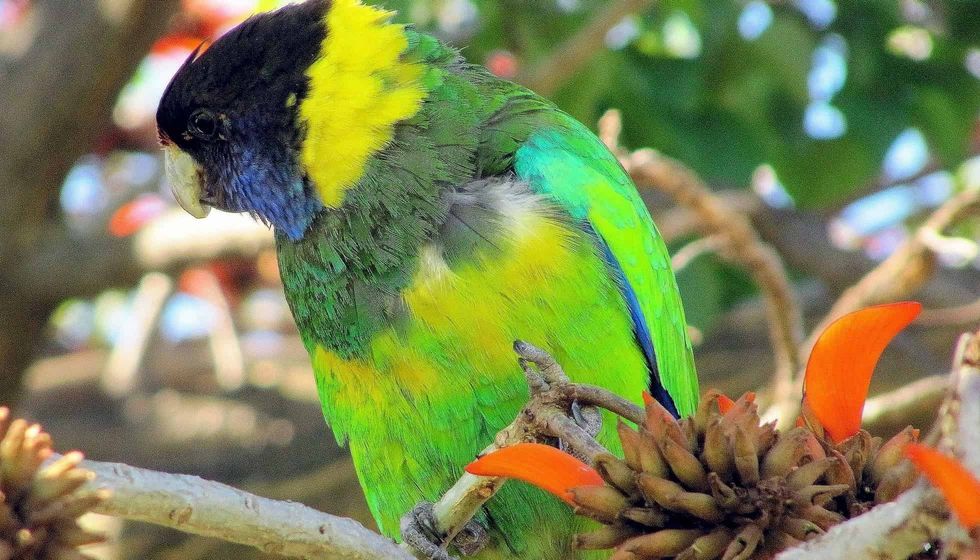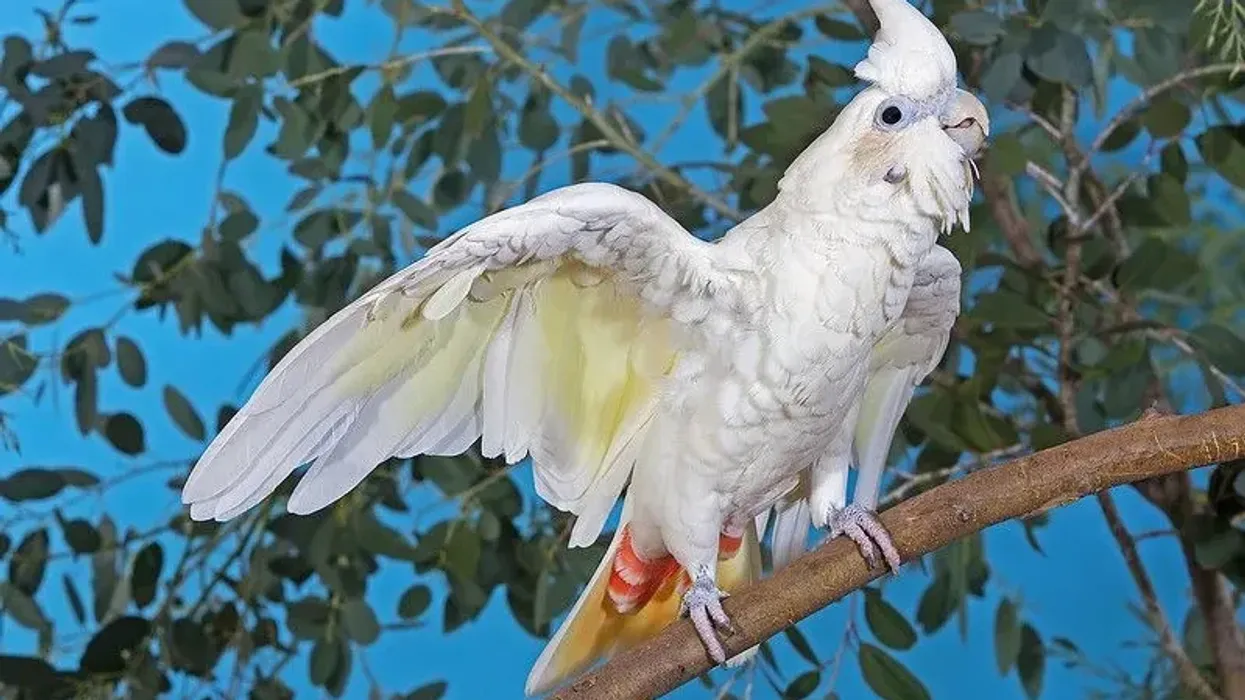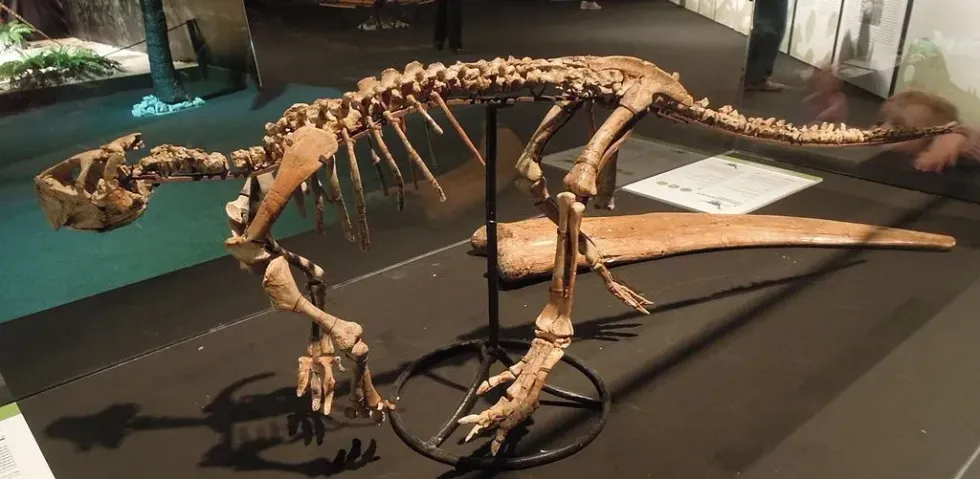The Australian ringneck is a large species of parrots. The subspecies can be identified with the help of differing sizes and plumage in different regions.
Initially, the four subspecies of the Barnardius genus were identified within two categorizations, the mallee ringneck (Barnardius barnardi) and the Port Lincoln parrot (Barnardius zonarius). It was believed that interbreeding between the Port Lincoln ringneck and mallee ringneck resulted in hybrids.
However, the division of the four subspecies in two did not offer a detailed perspective of the other two subspecies, the Cloncurry parrot (Barnardius macgillivrayi) and twenty-eight parrot (Barnardius semitorquatus). The species is commonly regarded as the Twenty-eight parrot in Western Australia.
The term 'ringneck' comes from the yellow band near the back of the throat that looks like a collar. The species has adapted to every geographical range except for extreme highland or tropical regions. The mating partners share a special bond. While the female incubates the eggs, the male counterpart feeds them lovingly! Isn't that adorable?
If you enjoyed the content, you could also check out some fascinating facts about the hyacinth macaw and monk parakeet.
Australian Ringneck Interesting Facts
What type of animal is an Australian ringneck?
The Australian ringneck (Barnardius zonarius) is a bird species.
What class of animal does an Australian ringneck belong to?
Australian ringnecks belong to the Aves class.
How many Australian ringnecks are there in the world?
The exact population of Australian ringnecks has not been documented. However, their population is stable and increasing in Australia. It estimated there are above 100,000 birds currently.
Where does an Australian ringneck live?
The Australian ringneck, as the name suggests, is endemic to Australia and generally found in the Wheatbelt regions.
The mallee ringneck can be traced to northwestern Queensland, the arid eastern Northern Territory, and inner parts of eastern Australia. The Port Lincoln parrot can be found extensively in the central and western parts of New South Wales, southwestern Queensland, northwestern Victoria, and eastern South Australia.
However, ringnecks are generally absent from coastal regions of Australia's eastern states, but they can still sparsely be located around Sydney, New South Wales, and the Tablelands.
What is an Australian ringneck's habitat?
Australian ringnecks thrive in a versatile habitat. They can be found in wetlands, forests, and savannahs. Woods and open forests are a few more areas inhabited by these birds.
Who do Australian ringnecks live with?
Australian ringnecks are generally social birds found living in pairs or small flocks. These pairs or small flocks can be located around open, sparsely forested areas.
How long does an Australian ringneck live?
Australian ringnecks can live for around 17-18 years in captivity.
How do they reproduce?
The breeding period of Australian ringnecks is from August to December. However, their breeding behavior is influenced by rain. Delays are noticed in drought seasons.
Ringnecks lay their eggs in cavities or hollows of trees. Wandoo and salmon gum are some of their preferred nesting trees.
After ringnecks lay their eggs, the female incubates the eggs singlehandedly and this period extends for about 19-20 days. When the female incubates the eggs, the male tends to shower her with love by feeding her. As the eggs hatch, the female bird feeds the hatchling for around the first week, after which both parents feed the chicks.
What is their conservation status?
One of the most common birds in Australia, the species populates the Wheatbelt of Australia. According to the International Union for Conservation of Nature (IUCN) Red List, the Australian ringnecks fall under Least Concern and there is no immediate threat to their population.
There is, however, a long-term concern. Clearing of forests and woodlands for agricultural lands is highly impactful for the current population.
Moreover, inadequate regeneration of woodland cover adds fuel to the fire. In Western Australia, ringnecks are shot as they are considered to be orchard pests, lowering their population further.
Australian Ringneck Fun Facts
What do Australian ringnecks look like?
The Australian ringneck (Barnardius zonarius) is a vibrant and colorful parrot species exhibiting contrasting features. In an Australian ringneck parrot, green is the predominant body color, with the obvious yellow band that characterizes its look. Generally, the head tapers down with a red frontal band just above their beak.
Among the four subspecies of Australian ringnecks, each has a distinct color pattern giving them distinct identification. The Australian mallee ringneck parrot primarily exhibits green and blue-colored body.
The Cloncurry parrot possesses a mix of yellow and turquoise on its face. The Port Lincoln ringneck is known for its darker hood. The twenty-eight parrot is mostly green with a red frontal band.
How cute are they?
If you admire parrots, they can be really cute as Australian ringnecks are a parrot species flaunting glamorous colors. They can be very loud, but they often feed on grains or nuts by pecking adorably.
How do they communicate?
The Australian ringneck is a large and loud bird that communicates through various sounds. One of the popular notes of the Australian ringneck is the 'kling-kling-kling'.
They can also utter a strong 'put-kleepit-kleepit' or a very short alarming sound like 'vatch'. Unlike the other birds in the Barnardi group, they are not chatterers. The Port Lincoln parrot vocalizes in a lower pitch.
How big is an Australian ringneck?
Australian ringnecks are around 11 in (28 cm) in length, while they weigh around 4.3-7 oz (121-200 g). In comparison, the average length of the Amazon parrot ranges from about 10-20 in (25-50 cm). Mealy parrots are slightly bigger than Australian ringnecks.
How fast can an Australian ringneck fly?
There has not been any record of how fast Australian ringnecks can fly. However, since they are parrots, it can be estimated that they can fly at 40-50 mph (64-80 kph), like most other parrots.
How much does an Australian ringneck weigh?
An Australian ringneck has a healthy weight of around 4.3-7 oz (121-200 g), whereas a green parakeet weighs 1.6-2.1 oz (45-60 g).
What are the male and female names of the species?
There is no special name for the male and female Australian ringneck. However, they are a parrot species, and like most birds, the male Australian ringneck is called a cock and the female is called a hen.
What would you call a baby Australian ringneck?
A baby Australian ringneck is called a chick, nestling, or hatchling.
What do they eat?
Australian ringnecks live in several areas and their diet changes depending on the area they live in. Australian ringnecks feed mainly on fruits and nectar when they live in forested areas, while in arid regions, Australian ringnecks feed mainly on seeds of plants. They also feed on larvae and small insects. They often feed on spilled grains on roadsides.
Are they poisonous?
Australian ringnecks belong to the parrot species. Australian ringnecks generally depend on fruits, and when they eat insects, they don't poison them. It can be said that the Australian ringneck is not venomous. Also, they do not portray aggression.
Would they make a good pet?
If you like parrots, then you might want to keep an Australian ringneck as a pet. Australian ringnecks often come close to humans when they are offered food. You might even trace one happily gobbling up spilled grain on roadsides. However, they do not love human settlements too much.
If you can tame them, then they can make great pets. The mallee ringneck can be an ideal pet as it doesn't make loud noises. However, ringnecks can scream to draw attention when they want to play.
Did you know...
To escape the midday heat of Australia, they stay in the hollow shade of dense trees.
Although these birds are really hardy, they can suffer from diseases like the psittacine beak and feather disease, sarcocystosis, aspergillosis, and psittacosis.
The distinct 'twen-ty-eight' call made the bird popular as the twenty-eight parrot in Western Australia.
Do Australian ringnecks migrate?
Australian ringnecks don't migrate and remain in Australia, mostly residing within their geographical habitat. Although Australian ringnecks are generally absent from coastal dry regions, in 1975, many could be found in Nullarbor Plain. It has been estimated that the lack of water may have resulted in this movement.
What is the difference between an Australian ringneck and a ring-necked parakeet?
Parrots and parakeets are similar in many ways. Categorizing the four subspecies in two did not do much good, and later, specific attention to detail helped to differentiate the remaining two subspecies of Australian ringnecks.
However, when compared with the ring-necked parakeet, Australian ringnecks are mostly green and while the former has a yellowish-green texture.
They have a narrow rose pink line over the nape, but the latter has the obvious yellow band. Another difference is that the former generally stays in urban localities, whereas Australian ringnecks stay aloof from humans.
A pet Indian rose-ring parakeet can be a great talker, but a pet Australian ringneck doesn't articulate too much. It is difficult to find an Australian ringneck parrot for sale as they have been protected under the law. However, the Australian Indian ringneck sale is common.
Here at Kidadl, we have carefully created lots of interesting family-friendly animal facts for everyone to discover! Learn more about some other birds from our eastern wood pewee and great green macaw.
You can even occupy yourself at home by coloring in one of our free printable Australian ringneck coloring pages.










